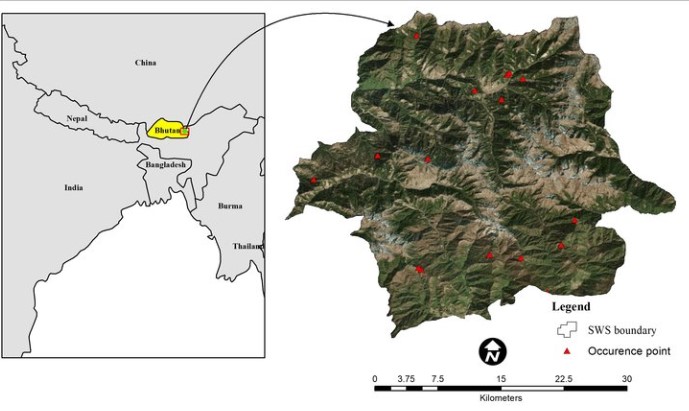Focus: GS-II International Relations
Why in news?
- China has now created a new border dispute with Bhutan, one of India’s traditional ally.
- Beijing has been aggressively attempting to alter the status quo in East China Sea, South China Sea and with India in Arunachal Pradesh and Ladakh.
Details
- At a virtual meeting of the Global Environment Facility (GEF) Beijing objected to the grant for Sakteng Wildlife Sanctuary (SWS) in eastern Bhutan’s Trashigang district bordering India and China, claiming that the location was disputed.
- The majority of the GEF council members supported Bhutan’s view and the draft summary of the chair was approved by the council and despite objection from the Chinese council member, the work programme was adopted.
Bhutan and China Border Dispute
- Bhutan and China have a border dispute since 1984. Talks between Thimphu and Beijing have been limited to three areas of dispute (two in North Bhutan — Jakarlung and Pasamlung areas — and one in West Bhutan).
- Sakteng is not part of any of the three disputed areas
Sakteng Wildlife Sanctuary (SWS)

- Located in the eastern most part of Bhutan, the SWS consists alpine meadow and temperate and warm broadleaf forests.
- Three major rivers- Manas Chu, Bada Chu and Dhansiri Chu – have their origin here.
- Red panda, Himalayan black bear, Wild dog, Snow leopard, Barking deer, and Himalayan red fox add to the mammal richness of the park.
- Avifaunal species like Assamese macaque, Blood pheasant, Grey backed shrike, Grey headed woodpecker, Common hoopoe, Rufous vented tit and Dark breasted rose finch are found here too.
- Overgrazing by cattle and overexploitation of forest resources are negatively impacting the biodiversity of the park.
Global Environment Facility (GEF)
- The Global Environment Facility (GEF) was established on the eve of the 1992 Rio Earth Summit to help tackle our planet’s most pressing environmental problems.
- The GEF unites 183 countries in partnership with international institutions, civil society organizations (CSOs), and the private sector to address global environmental issues while supporting national sustainable development initiatives.
- The GEF work focuses on six main areas, including biodiversity, climate change (mitigation and adaptation), chemicals, international waters, land degradation, sustainable forest management/REDD+.
- GEF has also worked on other programs including, Capacity development, Country support programme, Debt-for-nature swaps etc.
India – Bhutan relations
- India and Bhutan have been sharing ties since 1910 when Bhutan became a protectorate of British India, allowing the British to “guide” its foreign affairs and defence.
- When India declared independence in 1947, Bhutan was among the first nations to recognise it.
- Since then, the relationship between the countries has become stronger, especially because Bhutan also has a historically tense relationship with China.
- India and Bhutan also share deep religio-cultural links. Guru Padmasambhava, a Buddhist saint played an influential role in spreading Buddhism and cementing traditional ties between people in both nations.
- The basis for bilateral relations between India and Bhutan was formed by the Indo-Bhutan Treaty of Peace and Friendship of 1949.
- Bhutan shares border with four Indian States: Assam, Arunachal Pradesh, West Bengal and Sikkim.
- Nestled in the Himalayas, Bhutan serves as a buffer between India and China.
- Security of Bhutan’s present borders especially its western border is very important for India.
- Bhutan provides a market for Indian commodities and is a destination for Indian investment. Also, for India, Bhutan is a rich source of hydropower.
- About 60,000 Indian nationals live in Bhutan, employed mostly in the hydro-electric power construction and road industry.
Recently in News: Click Here to read more about India-Bhutan Kholongchhu Project (2nd Article)
-Source: Hindustan Times




